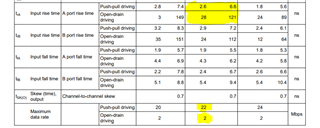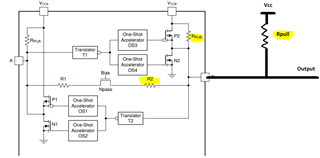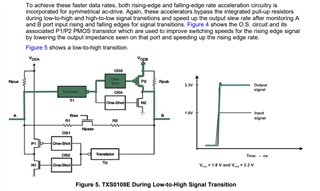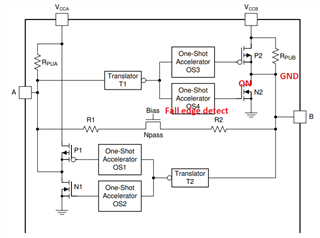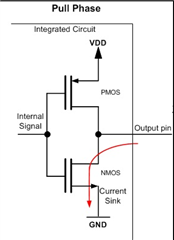Other Parts Discussed in Thread: TXS0108E, TXS010, OS3
Hi,
1) TXS0102 and series can operate both open drain and push pull. But how does it figure out which interface it's driving? When I connect push pull device, push pull drive, when open drain device is connected, open drain drive. How does it decide whether to choose open drain or push pull configurations? I read application notes and watch video series but I couldn't understand why and how it made this choice.
2) I think the push pull structure can be used as an open drain with a pull-up resistor externally, (fix if wrong.) While the supported speed for open drain is 2 Mbps (2V5), for push pull it is 24 Mbps (2V5). While I cannot drive the MDIO interface as open drain, I can drive the MDIO interface when I convert push pull to open drain and use it. Is this approach correct?
3) When used on the MDIO interface, should I calculate the internal pull-up resistor with the external pull-up resistor I will put outside?


